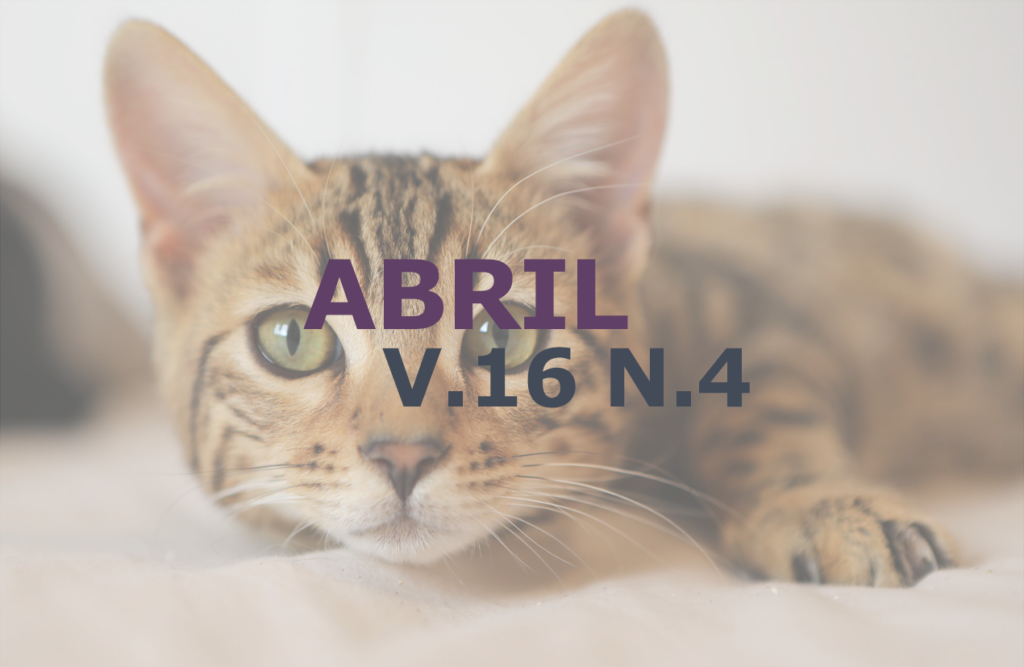Successful experience with axenic isolation of Leishmania infantum in culture medium enriched with equine blood
DOI:
https://doi.org/10.31533/pubvet.v16n04a1090.1-9Keywords:
Equine, growth and development, axenic culture, Leishmania infantum, bloodAbstract
The aim of the study was to demonstrate a successful experience in the axenic isolation of Leishmania infantum (L. infantum) promastigotes in culture using base agar media enriched with defibrinated equine blood (SDE). The study used lymph node aspirate, spleen, liver and lymph node fragments from dogs infected with the disease. The culture media used for the isolation of the parasite were biphasic (solid and liquid) and monophasic (liquid). For a biphasic phase, Blood Agar Base (BAB) and Neal Novy Nicolle (NNN) medium were used, both enriched with SDE, which after solidification was added to Brain Heart Infusion (BHI) broth. For the monophasic phase, Medium 199 (M199) supplemented with 10% fetal bovine serum (SFB) was used. The promastigotes were seeded in duplicate, kept in an oven by biochemical oxygen demand at 25º C for 15 days. Microscopic readings were taken daily to monitor the primary growth phase of the parasite. After primary isolation, they were serialized and diluted with a final concentration of 1x106 parasites/mL, for evaluation of the growth curve. The continuous study showed that in tubes containing SDE enriched NNN and BAB biphasic media, primary parasite growth was 72 hours, whereas in tubes supplemented with SFB it was 96 hours. Regarding the growth curve, it was observed that during an exponential phase, as SDE enriched spleen, liver and lymph node fragments obtained greater promastigotes, when used with SFB supplemented ones, being 189 x 106 e 128 x 106 parasites/mL, respectively. There was a significant difference (P < 0.05) in the percentage of the number of promastigotes in a medium enriched with SDE, when compared to the medium with SFB. The primary tubes remained viable throughout the study period, even after replenishing used to maintain the parasite. The traditional technique of isolation of the parasite in culture medium most commonly used is in base agar enriched with rabbit blood; however, operational difficulties in the acquisition of this enricher have driven the search for other sources of protein supplementation for L. infantum cultivation. The study reveals that the use of SDE as an alternative enrichment medium for the primary isolation of L. infantum was feasible to be used in laboratory routine.
Downloads
Published
Issue
Section
License
Copyright (c) 2022 Denise Maria Bussoni Bertollo, Janaína Olher Martins Montanha

This work is licensed under a Creative Commons Attribution 4.0 International License.
Você tem o direito de:
Compartilhar — copiar e redistribuir o material em qualquer suporte ou formato
Adaptar — remixar, transformar, e criar a partir do material para qualquer fim, mesmo que comercial.
O licenciante não pode revogar estes direitos desde que você respeite os termos da licença. De acordo com os termos seguintes:
Atribuição
— Você deve dar o crédito apropriado, prover um link para a licença e indicar se mudanças foram feitas. Você deve fazê-lo em qualquer circunstância razoável, mas de nenhuma maneira que sugira que o licenciante apoia você ou o seu uso. Sem restrições adicionais
— Você não pode aplicar termos jurídicos ou medidas de caráter tecnológico que restrinjam legalmente outros de fazerem algo que a licença permita.





